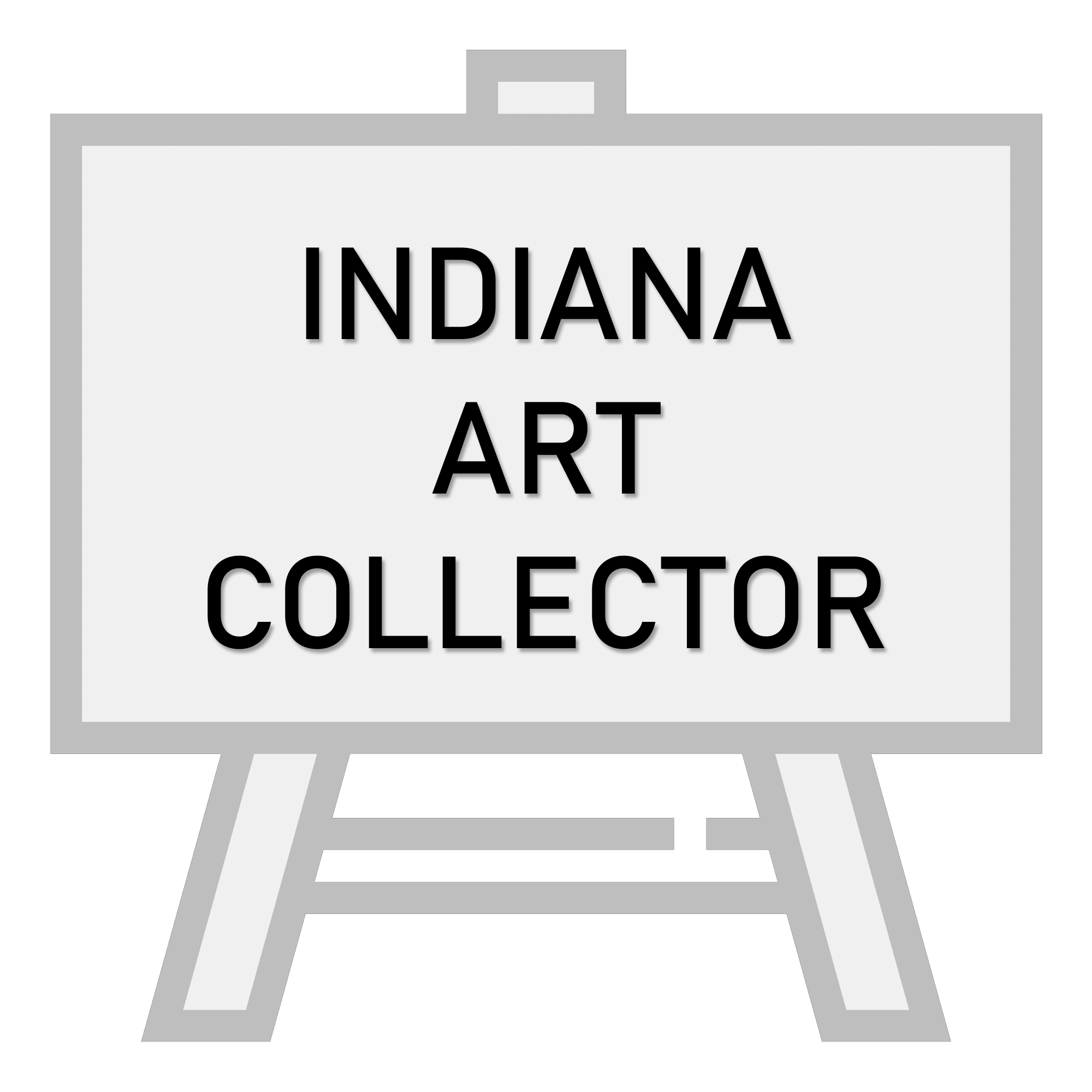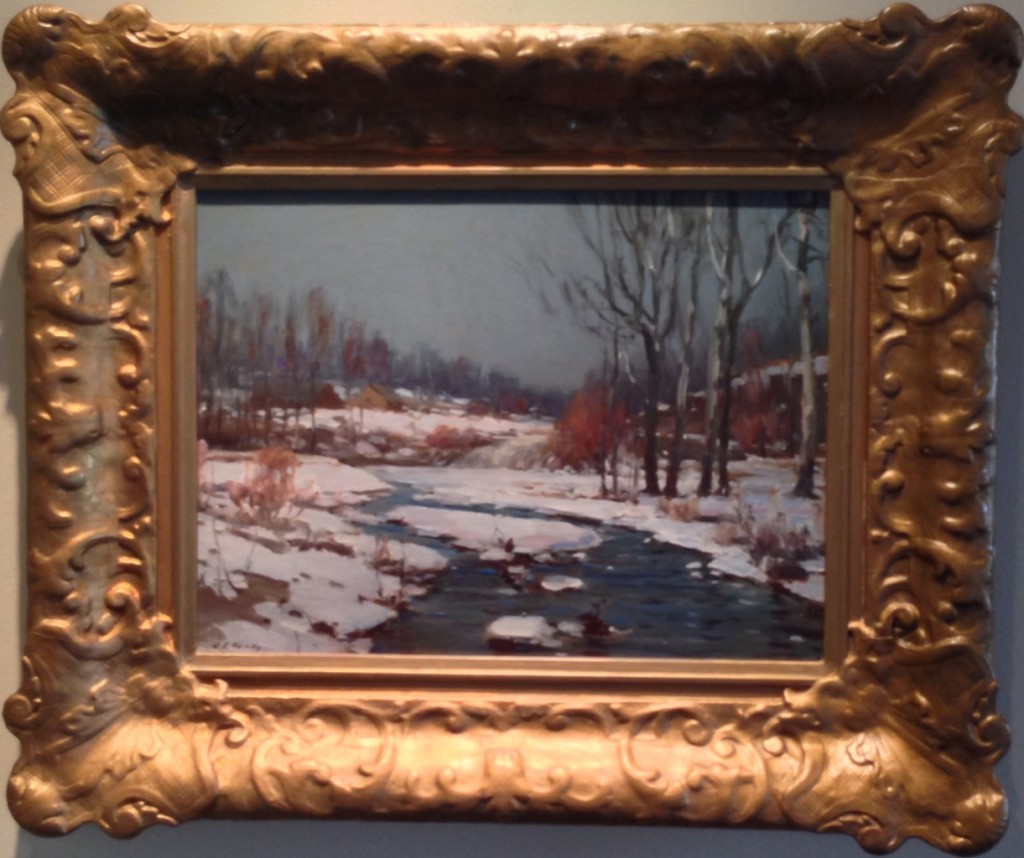John Bundy was born in Guilford County, North Carolina and raised near Monrovia on a farm in Morgan County, Indiana. He was part of the Richmond School of Indiana painters and Richmond’s premier artist. Bundy attended Quaker schools and married Mary Marlatt in 1875. He spent nearly a decade in New York City as a portraitist and was also a photographer, but later decided to focus on landscape painting. He worked in both oil and watercolor, with much of his subject matter coming from Wayne County, Indiana, especially the Whitewater Valley. In 1888 he moved to Richmond and for eight years headed the Art Department at Earlham College, where he taught drawing and painting. During that time a book of his etchings, “Fond Recollections”, was published. This book reflected his love of the scenery around Earlham. After the death of his wife in 1906, John E. Bundy built a studio behind the family home in Monrovia and lived with his sister. From 1910 to 1911 he traveled in California and then spent several summers in Northern Michigan on Little Traverse Bay, where he painted primarily in watercolor. By the early 1920s, he was remarried to Elwood Morris, a Richmond painter. He exhibited widely across the United States, including the 1904 Louisiana Purchase Exposition, the Pennsylvania Academy in 1904, the National Academy of Design in 1911 and 1916, the Chicago Art Institute in 1903 and 1907-1914, the Hoosier Salon in 1925, and the 1902 Society of Western Artists. His primary dealer was J.W. Young of Chicago. In 1929, John Bundy, who was getting quite frail, moved to Harlingen, Texas with his son but died in a sanatorium in Cincinnati on January 17, 1933.
Many of these artists were either native to Indiana or lived, worked, and studied around the Midwest in the early 20th century, specifically in Indiana locales such as Indianapolis, Brown County, Muncie, Nashville, Portland, Richmond, South Bend, and southern Indiana.
Several artists studied or were integral figures at Indiana institutes such as the Fort Wayne Art School, Muncie Art School, Indiana School of Art, and the Richmond School. Others were associated with entities such as the Brown County Art Colony, Hoosier Group, Hoosier Salon, and the Richmond Art Museum. The artwork we are seeking includes impressionist, landscape, oil, still life, and watercolor paintings from these Indiana artists.
Brown County Art Colony
The Brown County Art Colony was formed in the early 1900s by artists who were attracted by the undisturbed picturesque landscape known as Peaceful Valley. T.C. Steele was the first to become a resident of the county when he purchased 200 acres near Belmont. Adolph Shulz is considered to be the founder of the Brown County Art Colony. He began visiting Brown County in 1908 and in 1917 became a permanent resident. Both Adolph Shulz and T.C. Steele influenced other artists and many began building cabins and moving to the area.
Will Vawter and Gustave Baumann were among the first to make Brown County their home. Other artists such as Charles Dahlgreen, Lucie Hartrath, and L.O. Griffith came from Chicago and by the early 1930s there were at least eighteen artists with permanent homes in Brown County.
Artists such as C. Curry Bohm, Edward K. Williams, Ada Walter Shulz, Carl Graf, V.J. Cariani, Gustav Baumann, Will Vawter, Dale Bessire, Georges LaChance, Marie Goth, Leota Loop, Adam Emory Albright, Olive Rush, and Alexis Fournier flourished and created the Brown County Art Colony nearly 100 years ago.
Sources:
- Letsinger-Miller, Lyn. The Artists of Brown County. Bloomington and Indianapolis: Indiana University Press, 1994.
- Nesbit, M. Joanne, ed., Barbara Judd, comp. Those Brown County Artists: The Ones Who Came the Ones Who Stayed the Ones Who Moved On. Nashville: Nana’s Book, 1993.
Sell Us Your Indiana Art
If you are interested in selling us your Indiana art, please contact us online, give us a call or SMS at 812-327-0401.

